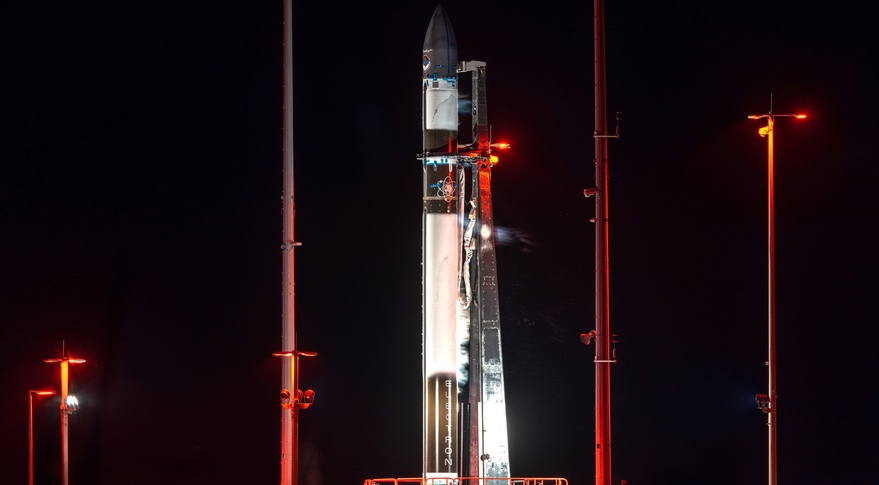WASHINGTON — NASA has selected Rocket Lab to launch the remaining four cubesats of a constellation to monitor tropical weather systems after the first two were lost in an Astra launch failure.
NASA announced Nov. 23 that it awarded a task order to Rocket Lab through the agency’s Venture-class Acquisition of Dedicated and Rideshare (VADR) contract for the launch of the satellites on two Electron vehicles scheduled for a 60-day period no earlier than May 1, 2023. That schedule would allow the satellites to be ready for the 2023 Atlantic hurricane season.
NASA originally awarded a $7.95 million contract to Astra for launching six of the Time-Resolved Observations of Precipitation structure and storm Intensity with a Constellation of Smallsats (TROPICS) satellites on three of the company’s Rocket 3.3 vehicles. Although each TROPICS satellite is only a 3U cubesat, the three launches were needed to place the satellites into three orbital planes for improved revisit times.
However, the first two TROPICS cubesats were lost in a Rocket 3.3 launch failure June 12. In August, Astra announced it was retiring that vehicle so it could focus on the larger Rocket 4, which will not enter service before late 2023. NASA and Astra later revised the contract for the remaining two launches, which will now be used to launch “comparable scientific payloads” on Rocket 4. The agency said it would procure launches for the remaining satellites through its VADR contract vehicle.
In a break from traditional launch contract announcements, neither NASA nor Rocket Lab would disclose the value of this VADR task order. “Pricing provided in response to launch service task orders under VADR are competed in a closed environment and as such are considered proprietary to the indefinite-delivery/indefinite-quantity contract,” a NASA spokesperson said.
The NASA release stated that, despite the small size of the satellites, the two launches would be dedicated missions, likely because of the specific orbits required by TROPICS. Rocket Lab executives said in a Nov. 9 earnings call that the current average price for an Electron launch is $7 million to $7.5 million.
Virginia launch plans, 2023 projections
The NASA announcement did not disclose where the TROPICS launches would take place. Rocket Lab later said that it will use Launch Complex (LC) 2 at Wallops Island, Virginia, for the two TROPICS launches.
Rocket Lab is gearing up for its first launch from LC-2, carrying three satellites for HawkEye 360, a radio-frequency intelligence company. Rocket Lab announced Nov. 21 it completed the final dress rehearsal for the launch, scheduled for no earlier than Dec. 7. That is dependent on NASA completing certification of the autonomous flight termination system required for the launch, something Rocket Lab said NASA “is continuing to make progress in.”
That will be followed by a second Electron launch from LC-2 in January. Peter Beck, chief executive of Rocket Lab, said that second launch would be for an “undisclosed commercial constellation customer.” One possibility is Capella Space, a company that operates a growing constellation of synthetic aperture radar imaging satellites. A Federal Communications Commission application in September sought a license for telemetry for an Electron launch of the Capella-9 and -10 satellites on an Electron from LC-2 between December 2022 and June 2023.
“We’re looking at what we think will be a pretty impressive growth year on Electron launch cadence” in 2023, said Adam Spice, Rocket Lab’s chief financial officer, during the earnings call. He projected “around 14” Electron launches in 2023. The upcoming inaugural LC-2 launch will be Rocket Lab’s tenth and final Electron launch of 2022.
Of those 14 launches, four to six will take place from LC-2. They will take place “pretty sporadically” through the year, Beck said, perhaps moving into a more regular cadence late in the year as the company and the launch range get used to Electron launches there.
While Rocket Lab says a typical Electron launch generates $7–7.5 million in revenue, there are variations, according to Spice. The company said its most recent launch Nov. 4, which carried a Swedish science satellite, was “heavily subsidized” since it was also a research and development flight to test rocket reusability. The company had intended to try and catch the booster in mid-air as it descended under a parachute, but a loss of telemetry from the falling booster forced the company to call off the attempt and instead recover the booster from the ocean.
Those recovery attempts generate less revenue, he said, since the schedule of the launches is driven by when the company is ready to make another recovery. “We basically try to subsidize the cost of that recovery mission with whatever payloads will fit into that defined timescale,” Spice said. “It’s much more important for us to get the mission off, even if we sell the rocket half-full.”
Spice said the company can generate positive gross margins on its launch business with four full-price launches per quarter. “A lot of good things happen when we’re launching more than once per month.”
However, he said that Rocket Lab is still some time from achieving profitability as it invests in the development of Neutron, its medium-class reusable launch vehicle. “Achieving and sustaining profitability can really only happen once we’ve got the majority of the R&D spending on Neutron in the rear-view mirror.”
